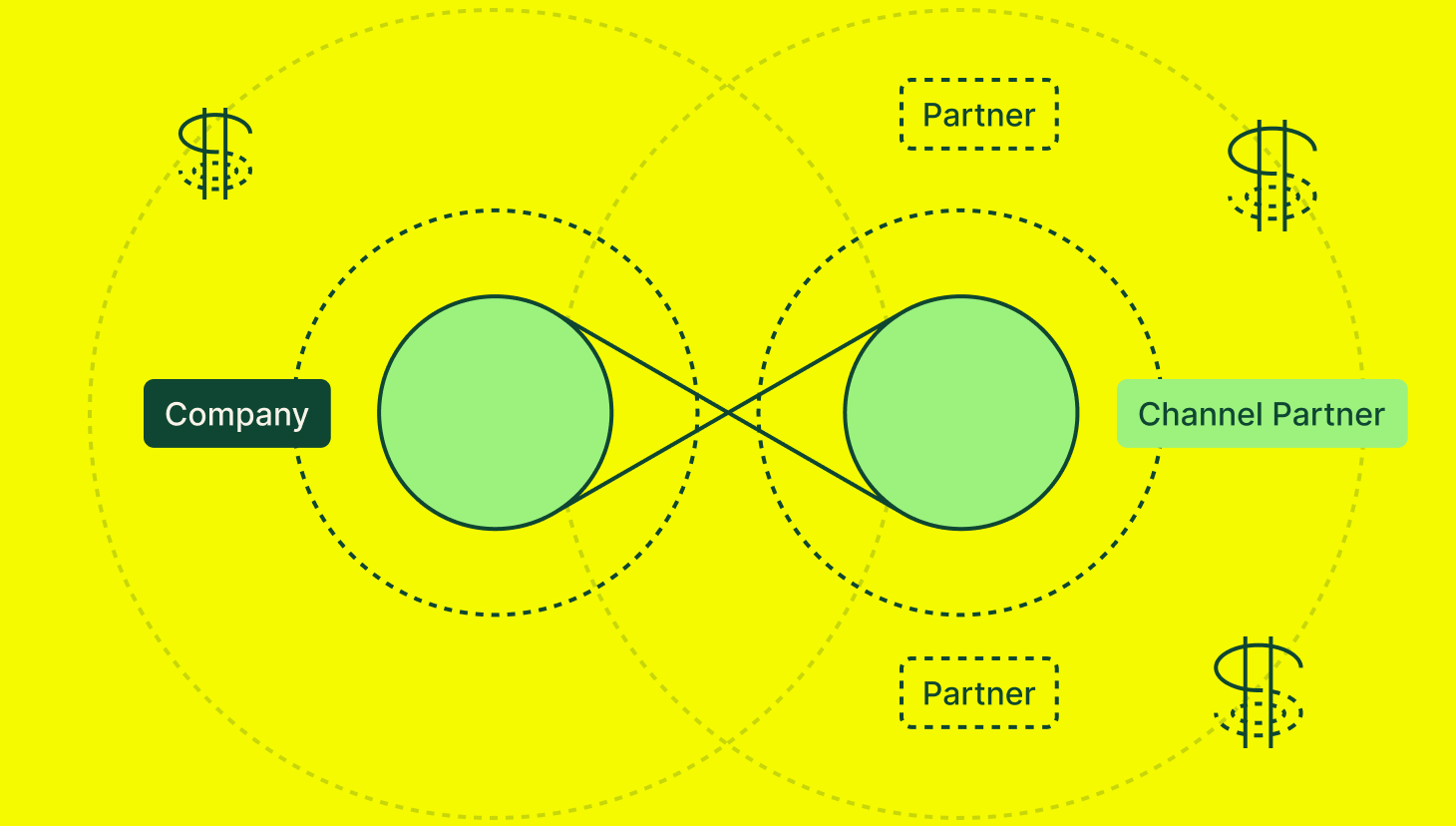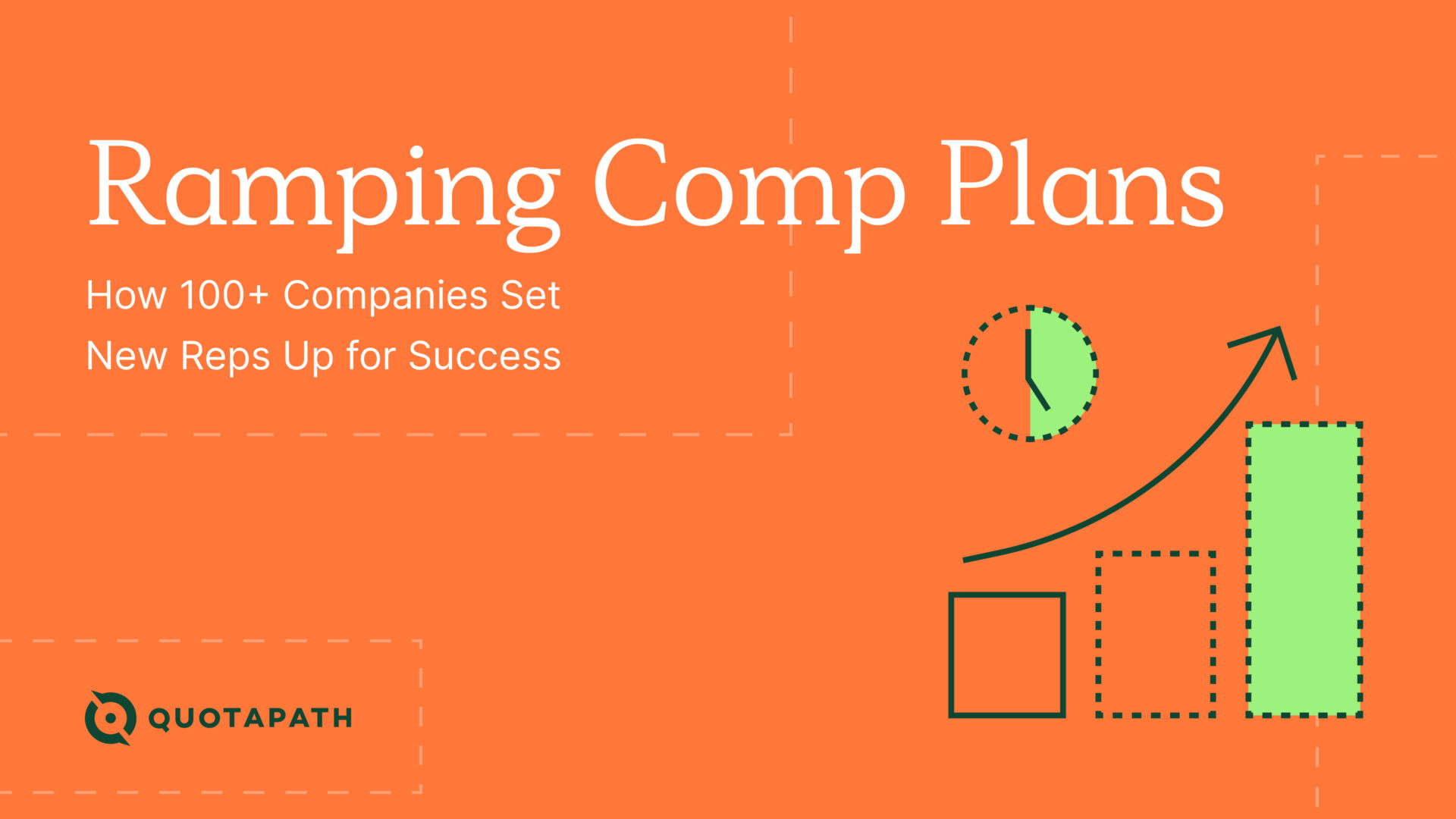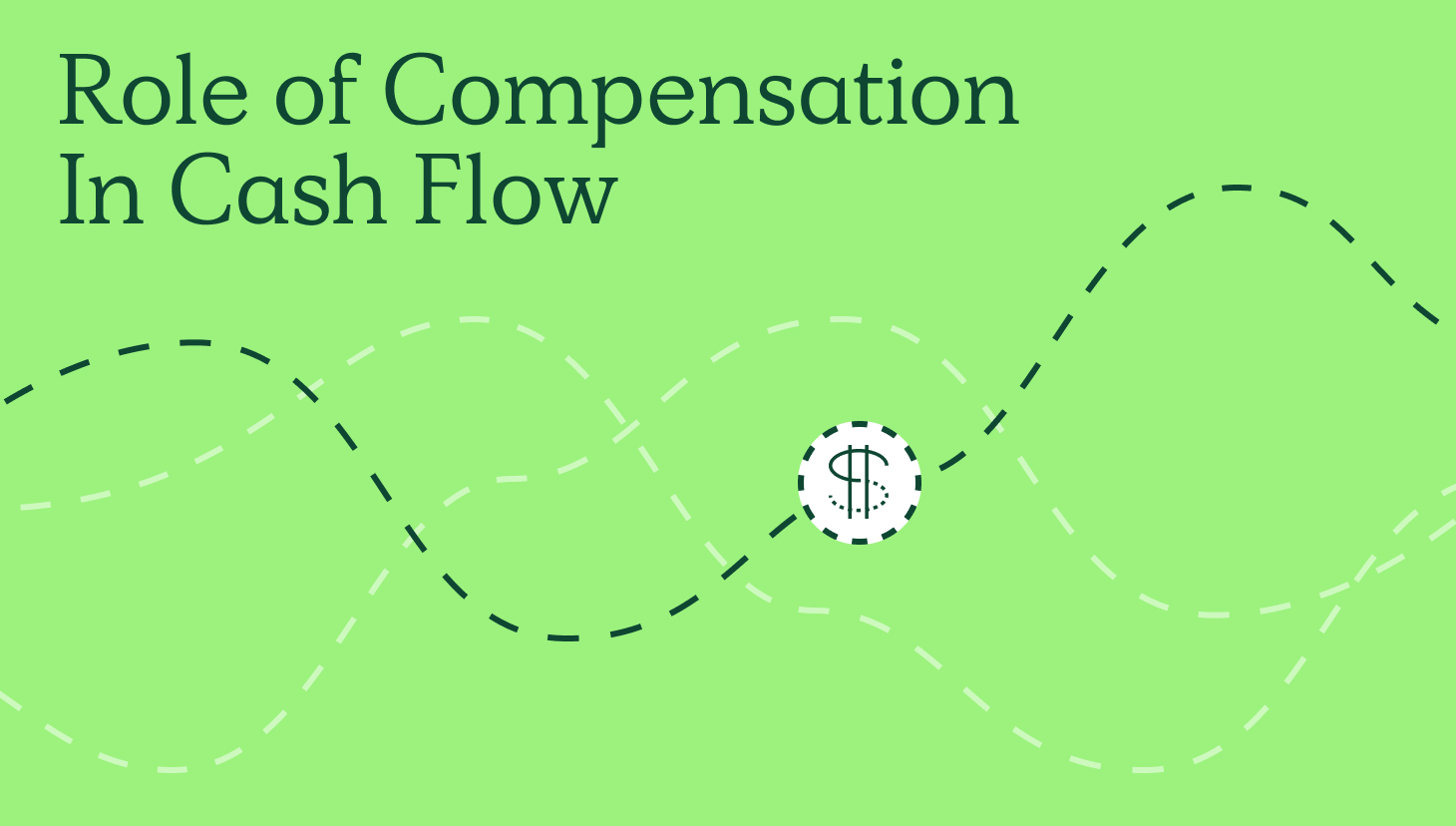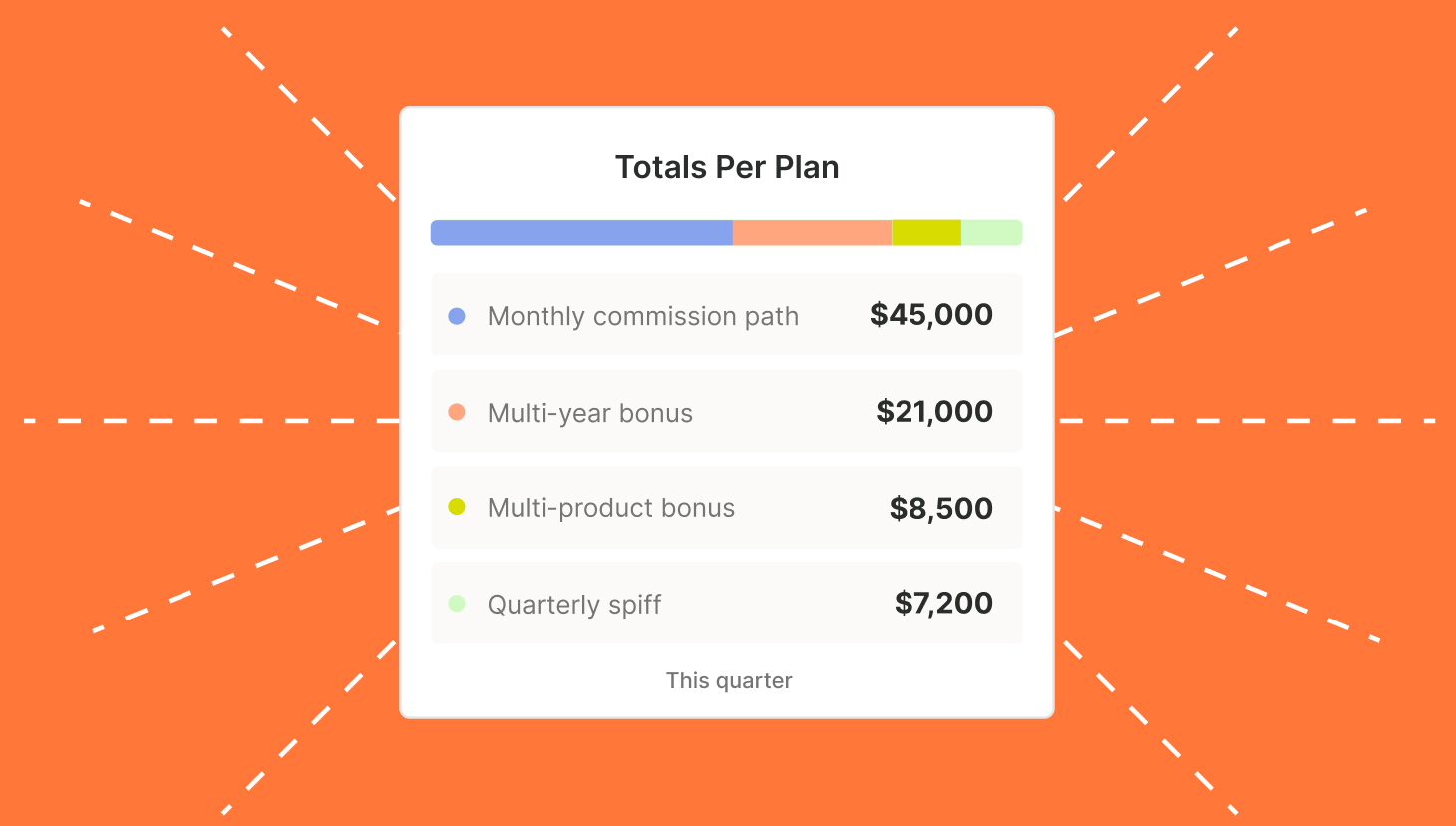Strategic partnerships can lead to up to 30% revenue increases.
It’s no wonder SaaS companies are heart-eyed toward this function.
But compensating for this role can be tricky.
Much like compensation plans for other go-to-market roles, your partnership compensation plans will depend on your organization’s maturity, target market, and goals.
Create Compensation Plans with confidence
RevOps, sales leaders, and finance teams use our free tool to ensure reps’ on-target earnings and quotas line up with industry standards. Customize plans with accelerators, bonuses, and more, by adjusting 9 variables.
Build a Comp PlanAre you an early-stage startup forging your first partnerships or a well-established player with a robust partner ecosystem? Who are you trying to reach with your partners? Understanding their needs and behaviors will dictate the most effective partner compensation approach. Are you aiming for rapid market penetration or building long-term, strategic partnerships that deliver recurring revenue?
By carefully considering these factors, you can design a partnership compensation plan that aligns incentives, motivates your team, and ultimately drives sustainable growth for your SaaS business.
Below, learn about the rise of channel partners and a few ways to consider compensating your in-house partnerships team.
What is a channel partner?
First, what is a channel partner?
Reaching your target market and achieving consistent growth can be a challenge. This is where channel partners come in, acting as a powerful extension of your go-to-market (GTM) strategy.
Channel partners are external companies collaborating with you to sell your SaaS product or service. They leverage their established industry relationships, market knowledge, and expertise to reach a broader audience and generate leads on your behalf.
Essentially, they act as an additional sales force, expanding your market reach, and brand awareness while enhancing your organization’s credibility and reducing your sales and marketing costs.
Proof in Partnerships
95% of Microsoft’s commercial revenue comes through its partner ecosystem, which grows by an astounding 7,500 partners per month.
In 2021, Zoom’s channel partners contributed to 40% of its business in Japan and over 70% with the U.S. Federal Government.
(Forbes)
The most common types of channel partners in SaaS fall into two categories:
- Technology: Technology partners have deep product knowledge and integrate your offering with their services to deliver enhanced customer value (E.g., HubSpot and QuotaPath).
- Resellers: Resellers act as intermediaries, purchasing your software licenses wholesale and then reselling them to end-users at a markup. They focus on distribution and sales volume.
By building a strategic network of channel partners, you add another avenue to increase pipeline and further define your ideal customer profile.
Building a Comp Plan for a New Territory
Compensation plans for new territories and products are especially tricky because of the lack of visibility into buyer behavior, purchase power, and product or brand recognition. Read our guide for help.
Visit GuideHow to Tell if You’re Ready For Partnerships
Despite the clear benefits of adding partner channels, not every organization will be ready to activate this lever immediately.
Here are some scenarios that indicate your business should add a partnerships vertical:
| Market Saturation and Reaching New Customers | Your core sales team is struggling to reach new customer segments, and the market seems saturated with your direct sales efforts. Adding a partnerships vertical allows you to leverage established partner networks and industry expertise to access new markets and acquire fresh leads. |
| Increased Sales Velocity and Geographic Expansion | You’re experiencing rapid growth and need to accelerate sales velocity. Partners can help you expand your geographic reach and close deals faster by utilizing their existing relationships and regional presence. |
| Need for Industry Expertise or Complementary Services | Your product requires deep industry expertise for successful implementation, or you lack the resources to offer essential services like training or support. Partners can bridge these gaps by bringing specialized knowledge and complementary service offerings to the table, creating a more comprehensive solution for your target market. |
| Limited Sales & Marketing Budget | You have a limited budget for sales and marketing, and leveraging a partner network can be a cost-effective way to expand your reach and generate leads. Partners can act as an extension of your sales force, reducing your overall GTM costs. |
| Complex Sales Cycle or Long Buying Journey | Your product has a complex sales cycle or a long buying journey. Partners can nurture leads, provide technical expertise during the sales process, and shorten your sales cycle by acting as trusted advisors to potential customers. |
| Compliance or Regulatory Hurdles | Entering new markets might involve navigating complex compliance or regulatory requirements. Partners with established experience in specific regions can help you overcome these hurdles and ensure a smooth market entry. |
| Desire to Scale Rapidly | You have ambitious growth goals and need to scale your business quickly. Building a strong partner ecosystem can accelerate your growth by providing a broader sales reach and increased brand awareness. |
By recognizing these scenarios, you can identify if a partnership vertical makes sense.
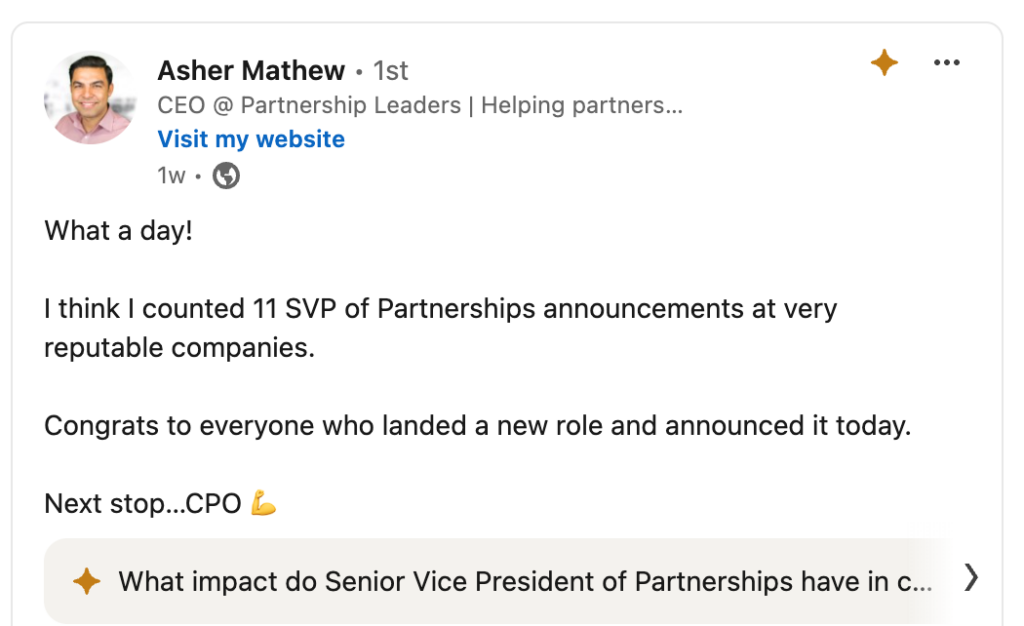
Rise of Channel Partners
Securing tech partners is a sales play and retention play; the stronger the partnership, the more benefits there are for both. This philosophy has become increasingly clear to businesses in recent years, fueling a dramatic rise in the importance of channel partners within the SaaS landscape.
For instance, according to Glassbox VP of Partnerships Alex Richards, a whopping 85% of SaaS companies acknowledge the critical role strategic partnerships play in their growth trajectory.
Meanwhile, 65% of SaaS companies actively partnered with another organization in the past year, highlighting the shift towards a collaborative approach to market expansion.
For real-time data, search “SaaS Partnerships jobs.” Thousands of roles are open, with about 300 at the executive level.
These statistics paint a compelling picture: partnerships are not just a trend but a strategic imperative for driving growth and success in today’s competitive SaaS landscape.
2024 Channel Partner Trends
So, what’s next for channel partnerships?
Techaisel compiled a list of 10 Channel Partner Predictions, three of which we’ve pulled for you below.
- Shifting Margins: Partners Embrace Customization
Shrinking margins are pushing partners to move beyond basic reselling. Success lies in offering customized solutions that combine multiple products with high-value services like integration and support. However, striking the right balance is crucial. Partners need to avoid overly generic offerings that get commoditized, while also keeping the cost of highly customized solutions manageable. This shift demands expertise in modular solutions and a flexible approach that adapts to evolving customer needs.
- AI: Friend or Foe? Partners Adapt to the New Landscape
AI is transforming IT, impacting both partner value propositions and the buying landscape. Channel partners need to embrace AI to stay relevant, offering solutions that leverage its benefits for faster business results and efficiencies. However, a proactive approach is key to avoid being disintermediated by vendors who develop their own AI-powered sales tools. Partners must carefully evaluate trends and invest in capabilities that align with their business goals.
- From Push to Pull: Partners Embrace Ecosystems
Customer demand for hybrid solutions is driving a shift from traditional channel models to collaborative ecosystems. Partners must adapt by developing strong multi-party collaboration skills and integrating around data-driven solutions. This means focusing on customer needs, not just selling products. Building successful ecosystems will be essential for partners to stay competitive.
Streamline commissions for your RevOps, Finance, and Sales teams
Design, track, and manage variable incentives with QuotaPath. Give your RevOps, finance, and sales teams transparency into sales compensation.
Talk to SalesPartnership Compensation Plans
With these insights into the partnership landscape, let’s explore compensation plans that incentivize the behaviors and drive the results predicted for successful channel partners.
Think of partnership compensation plans in the same way you would business development: it’s an investment.
Just like you incentivize your sales team to close deals, a well-designed partnership compensation plan motivates your partners to promote your product or service actively, ultimately driving growth for your entire ecosystem.
Remember that how you structure reseller partners’ compensation will differ from that of referrals from technology partners.
“If it’s a referral, you’re paying the partner something,” said Graham Collins, QuotaPath Head of Partnerships. “So, you might end up paying a collective 20% to honor 10% for the referral from the reseller and another 10% to your sales rep who closes the deal.”
Other things to keep in mind from Graham:
- The base:variable pay split is normally in the 65:35 range for in-house Partnership roles
- The commission rate will vary because it depends on how much of your revenue stems from partnerships
- When paying the referral fee, it’s best practice to keep the commission rate for your sales rep the same (versus lowering it for this scenario)
- Resellers will earn a higher commission rate because the commission stack is lower (you’re not involving sales reps from your side)
- Pay them consummate with the work they are doing for it
New Partnership Team Comp Plan
First, we have a comp plan structure for a new partnership team.
In our experience, new partner organizations earn compensation according to the number of new partners they get. This could take form based on new partners signed or new partners submitting their first lead.
Example: Single-rate Bonus (flat fee) X$ per partner
The New Head of Partnerships receives $500 per partner with a target of adding five partners per month. Again, this could be based on the Head of Partnerships singing them on as a partner or timed with the action of a new partner submitting their first lead to your organizaiton.
Mature Partnership Team Comp Plan
Once your partnership team matures, it’s time to base their bonus on a pipeline component. This could be according to the number of demos booked via your partner channels.
After that, you’d move to revenue generated from partner channels.
Add pipeline component – no. of demos booked, then move to revenue generated
“As the partner org. matures even further, and you figure out what good customers and partners to create these with. That’s when you measure revenue sourced/influenced by partners,” said Graham.
Getting in on Partnerships
Crafting a successful partnership compensation strategy requires a careful balance of motivation, alignment, and measurement.
By understanding your organization’s unique goals and the dynamics of your partner ecosystem, you can design a compensation plan that drives growth and fosters long-term partnerships.
Consider leveraging specialized tools and expertise to maximize the effectiveness of your partnership compensation strategy.
QuotaPath offers comprehensive solutions for managing complex compensation plans, including partnerships. Our platform provides the data, insights, and commission automation needed to optimize your partner incentives and drive exceptional performance.
Let’s connect to discuss your specific needs and explore how QuotaPath can help you achieve your goals.
